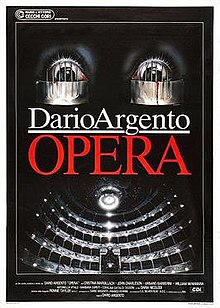
Dario Argento is an Italian film director, screenwriter and producer. His influential work in the horror genre during the 1970s and 1980s, particularly in the subgenre known as giallo, has led him to being referred to as the "Master of the Thrill" and the "Master of Horror".

In Italian cinema, giallo is a genre of murder mystery fiction that often contains slasher, thriller, psychological horror, sexploitation, and, less frequently, supernatural horror elements.

Lamberto Bava is an Italian film director. Born in Rome, Bava began working as an assistant director for his director father Mario Bava. Lamberto co-directed the 1979 television film La Venere d'Ille with his father and in 1980 directed his first solo feature film Macabre.
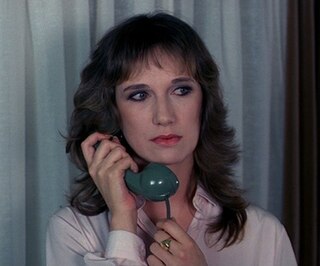
Daria Nicolodi was an Italian television and film actress and screenwriter, and associated mostly with the films of director Dario Argento.

Demons is a 1985 Italian supernatural horror film directed by Lamberto Bava, produced by Dario Argento, and starring Urbano Barberini and Natasha Hovey. The plot follows two female university students who, along with a number of random people, are given complimentary tickets to a mysterious movie screening, where they soon find themselves trapped in the theater with a horde of ravenous demons.

Michele Soavi, sometimes known as Michael Soavi is an Italian filmmaker, actor, and screenwriter best known for his work in the horror film genre, working alongside directors like Dario Argento and Lucio Fulci.

Stage Fright is a 1987 Italian slasher film directed by Michael Soavi, and starring Barbara Cupisti, David Brandon, and Giovanni Lombardo Radice. The plot involves a group of stage actors and crew who lock themselves inside a theater for rehearsal of a musical production, unaware that an escaped mental patient is locked inside with them.

The Cat o' Nine Tails is a 1971 film produced in Italy, and directed by Dario Argento, adapted from a story by Dardano Sacchetti, Luigi Cozzi, and an uncredited Bryan Edgar Wallace. It stars Karl Malden, James Franciscus, and Catherine Spaak.

Phenomena is a 1985 Italian giallo-horror film directed and co-written by Dario Argento, and starring Jennifer Connelly, Daria Nicolodi, Dalila Di Lazzaro, Patrick Bauchau and Donald Pleasence. The plot concerns an American girl at a remote Swiss boarding school who discovers she has psychic powers that allow her to communicate with insects, and uses them to pursue a serial killer who is butchering young women at and around the school.
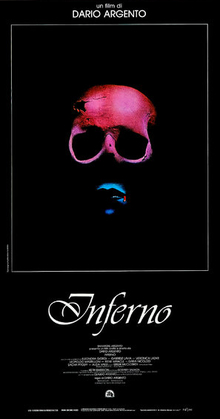
Inferno is a 1980 Italian supernatural horror film written and directed by Dario Argento, and starring Irene Miracle, Leigh McCloskey, Eleonora Giorgi, Daria Nicolodi and Alida Valli. The plot follows a young man's investigation into the disappearance of his sister, who had been living in a New York City apartment building that also served as a home for a powerful, centuries-old witch. The cinematography was by Romano Albani, and Keith Emerson composed the film's musical score.

Tenebrae is a 1982 Italian giallo film written and directed by Dario Argento. The film stars Anthony Franciosa as American author Peter Neal, who – while in Rome promoting his latest murder-mystery novel – becomes embroiled in the search for a serial killer who may have been inspired to kill by his novel. John Saxon and Daria Nicolodi co-star as Neal's agent and assistant respectively, while Giuliano Gemma and Carola Stagnaro appear as detectives investigating the murders. John Steiner, Veronica Lario, and Mirella D'Angelo also feature in minor roles. The film has been described as exploring themes of dualism and sexual aberration, and has strong metafictional elements; some commentators consider Tenebrae to be a direct reaction by Argento to criticism of his previous work, most especially his depictions of murders of women.

Deep Red, also known as The Hatchet Murders, is a 1975 Italian giallo film directed by Dario Argento and co-written by Argento and Bernardino Zapponi. It stars David Hemmings as a musician who investigates a series of murders performed by a mysterious figure wearing black leather gloves. The cast also stars Daria Nicolodi, Gabriele Lavia, Macha Méril, and Clara Calamai. The film's score was composed and performed by Goblin, the first in a long-running collaboration with Argento.
Urbano Barberini Riario Sforza Colonna di Sciarra, best known as Urbano Barberini or sometimes Urbano Barberini Sforza, is an Italian actor. He is also a translator, theater producer and artistic director. He is fluent in Italian and French languages and is mostly known for starring or appearing in many horror, fantasy and drama films, including the cult classic Dèmoni (Demons).
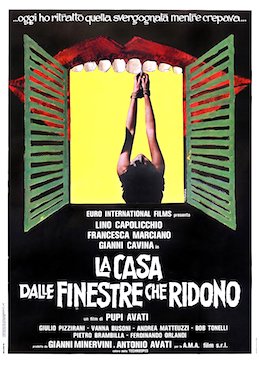
The House with Laughing Windows is a 1976 Italian giallo film co-written and directed by Pupi Avati. The film was shot in Lido degli Scacchi in the Ferrara province of the Emilia-Romagna region in northern Italy.

Killing Birds is a 1988 Italian horror film starring Lara Wendel and Robert Vaughn. The film is set in Louisiana where Fred Brown returns from the Vietnam war to find his wife in bed with her lover and slaughters the whole family sparing the newborn son. After the massacre, he is attacked by and blinded by a falcon. Twenty years later a group of students led by Steve and Anne meet Brown, and begin their search for a nearly extinct breed of woodpecker and come across grisly occurrences including boys being killed by vengeful zombies.

The Church is a 1989 Italian supernatural horror film co-written and directed by Michele Soavi, and produced by Dario Argento with Mario Cecchi Gori and Vittorio Cecchi Gori. It stars Hugh Quarshie, Tomas Arana, Barbara Cupisti, Asia Argento, Feodor Chaliapin, Jr. and Giovanni Lombardo Radice.

Delirium is a 1987 Italian giallo film directed by Lamberto Bava and starring Serena Grandi, David Brandon, George Eastman and Daria Nicolodi. The film is about Gioia, the owner of the adult Pussycat magazine. She is harassed by a killer who sends her photos of her co-workers with her own erotic photography in the background.

The Blood Stained Shadow Italian giallo film co-written and directed by Antonio Bido.The film follows a professor returning to his home of a coastline Italian village, where a woman is strangled like a young girl who was murdered years ago, before sinners in the town start dying as well.

Murder Obsession, a.k.a. Fear, is a 1981 Italian giallo-horror film directed by Riccardo Freda, and starring Laura Gemser and Anita Strindberg.
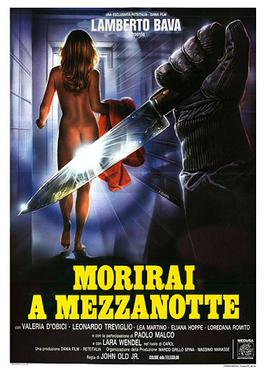
Midnight Killer is a 1986 Italian giallo film starring Valeria D'Obici and Leonardo Treviglio, and directed by Lamberto Bava.
